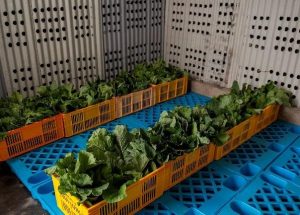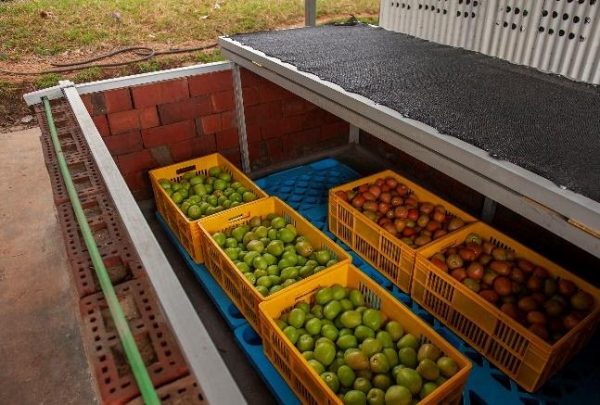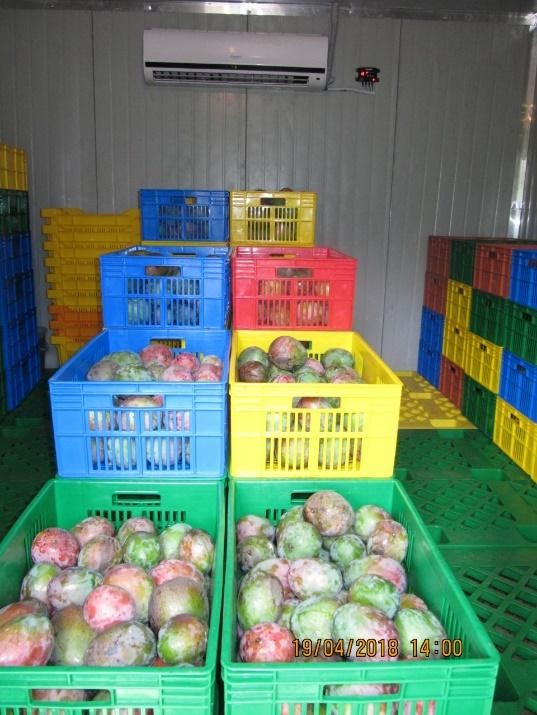UoN Postharvest Research Team Innovate Cold Storage Technologies
To address the challenge of lack of affordable cold storage for smallholder farmers, the University of Nairobi’s Multi-disciplinary Postharvest Research Team has been conducting adaptive research on innovative and affordable cold storage solutions. After years of on-station and on-farm adaptive research supported by various development partners including United States Agency for International Development (USAID), The Rockefeller Foundation and the Kenya government through the National Research Fund, several low-cost cold storage technologies have been validated for wide-scale adoption by farmers and other practitioners.
In the effort to build capacity and create awareness about these innovative technologies for cold storage the University of Nairobi Postharvest Research team recently established the Innovative Cold Storage Technologies: Research, Training and Demonstration Unit.
Lack of cold storage is one of the factors that contribute to high postharvest losses in perishable commodities including fruits and vegetables. For majority of smallholder farmers involved in horticultural production conventional cold rooms are beyond their means. Furthermore, the scale of production among smallholders does not make economic sense to invest in individual cold storage.
The unit has been established with support from various partners including the National Research Fund (NRF-Kenya); the Consortium for Postharvest Loss and Food Waste Reduction (funded by the Foundation for Food and Agricultural Research (FFAR); the SolCOOL Project (Solar Powered Cold Food Chains Food Waste Reduction and Value Addition) which is funded by UK-Innovate; and Massachusetts Institute of Technology (MIT) funded by J-WAFS. The demonstration unit houses various innovative cold storage technologies:
- Improved charcoal cooler

This is a modular design of a charcoal cooler which has been designed by Dr. Duncan Mbuge and Mr. Eliakim Mwachoni from the Department of Environmental and Biosystems Engineering, UoN. Charcoal coolers operate on the principal of evaporative cooling whereby hot air blowing through/over a porous medium such as charcoal which is wetted results in a cooling effect as the water evaporates from the medium taking away heat (heat of vaporization) from the environment. Subsequently the air that enters the inside of the chamber is cool and humid (Figure 1.)
Results from our adaptive research studies show that evaporative cooling can achieve temperatures up to 150C lower than the ambient air temperature, depending on the season and time of day. The demonstration unit features an improved design of the charcoal cooler (Figure 2). The walls are made from fiber glass to enhance the structural strength and durability. In addition, the fiber glass walls make the charcoal cooler more hygienic compared to the common charcoal coolers whereby the ‘naked’ charcoal is supported by chicken wire which is prone to rust. The 4 X 4 M charcoal cooler can accommodate up to 200 standard bread crates filled with fresh produce.
- The Zero Energy Brick Cooler (ZEBC)

The ZEBC also works on the principle of evaporative cooling but unlike the charcoal cooler, the ZEBC is built from a double brick wall whereby the sand that is sandwiched between the brick walls serves as the medium that holds water for evaporative cooling. The original model/design of the ZEBC is such that the bricks are interlocked with no cement and therefore the recommended height (0.5 – 1 M) and width (2.0 – 2.5 M) were limited to ensure stability of the unit. The improved ZEBC built at the demonstration unit is reinforced with steel rods for stability and therefore could be built higher and longer than the recommended dimensions (Figure 3). Future exploratory studies will establish the efficiency of larger units of the ZEBC.
- The Coolbot Cold Room

The Coolbot cold room is made up of various components: The Coolbot™ technology and an air-conditioner (AC) which are fitted into an insulated room. The CoolBot™ is an electronic gadget that overrides thermostat installed in a compatible AC thereby ‘tricking’ it to cool the room to temperatures lower than the minimum set for the thermostat-controlled AC. Therefore, the Coolbot makes it possible for the AC to attain temperatures as low as 00C without ice building up on its evaporator coils. Fitted onto a compatible AC, the Coolbot turns an insulated room into a walk-in cold room. The cost of a fully fitted Coolbot cold room (4mx4m) ranges from USD 5,000 to 8,000 depending on the level of sophistication, materials used and their availability. This cost is by far lower than the cost of a conventional cold room of the same size.
Other innovative cold storage technologies
The University of Nairobi Postharvest research team is partnering with other institutions (locally and globally) to introduce other innovative on-grid and off-grid cold storage technologies. One of the technologies in pipeline for installation at the demonstration unit is the Refrigerated Box (for storage and cold transport) which is made from solar panels and phase change materials (PCMs) (Figure 5). This new innovation is suitable not only for off-grid storage but can also be used in transit tracks. It will therefore provide an innovative alternative for refrigerated transport of high value horticultural produce.
A call for partnership in adaptive research on innovative cold storage technologies
The University of Nairobi team is also working with the Massachusetts Institute of Technology (MIT) from USA on modifications to improve efficiency of the evaporative coolers. Therefore, the MIT team led by Dr. Eric Verploegen has established a charcoal cooler unit which will be used to conduct studies on different materials that can be used to replace charcoal. Studies on alternatives to charcoal have been necessitated by the goal on ensuring that the storage technologies do not leave a negative footprint on the environment.
Going forward, the University of Nairobi research team is seeking to establish partnerships with innovators or organizations which are interested in introducing and/or promoting new cold storage technologies for smallholder farmers and other practitioners in Horticulture. The Demonstration unit provides such partners with an opportunity to conduct adaptive research on the technologies to establish their effectiveness and address any shortcomings before the technologies are rolled out or scaled out. The research team is planning to launch an intensive practical training course on fabrication and application of the various technologies. The course will target practitioners and entrepreneurs who wish to exploit agribusiness opportunities presented by these cold storage technologies.
Our aim is to find affordable, appropriate, and effective cold storage solutions for smallholder farmers and other practitioners in horticulture and other perishable commodities. Proper (cold) storage is among the many interventions recommended to reduce postharvest losses among smallholder horticultural farmers while enhancing their market access through smallholder aggregation.
The author is an Associate Professor of Horticulture at the Department of Plant Science and Crop Protection, University of Nairobi
Contacts
E-mail: ambuko@yahoo.com OR jane.ambuko@uonbi.ac.ke
This article was first posted here
